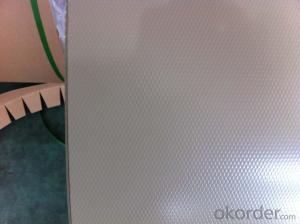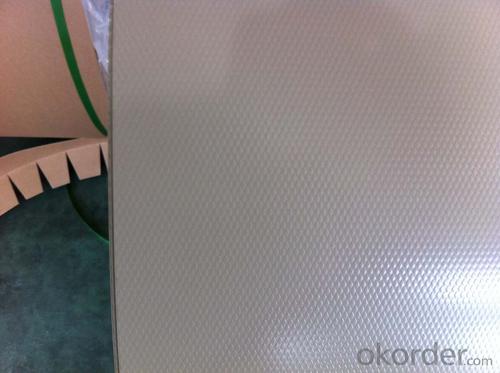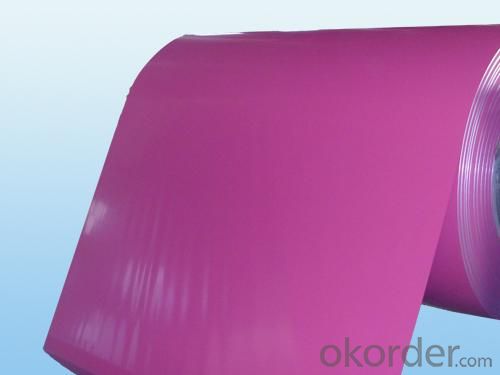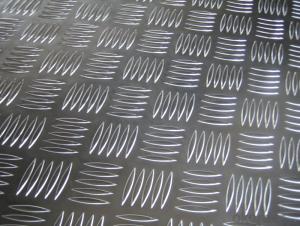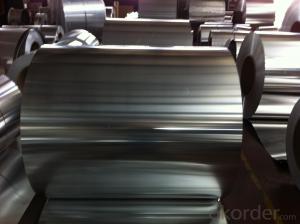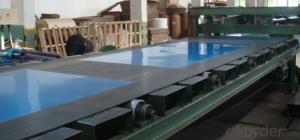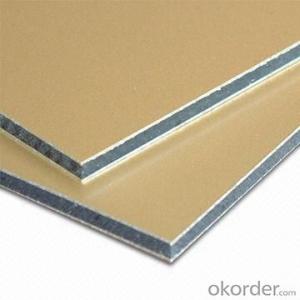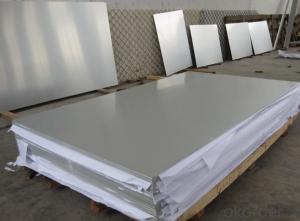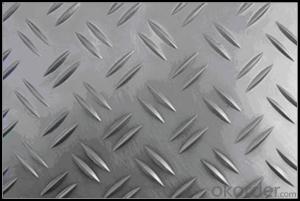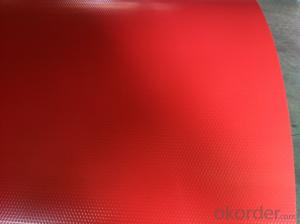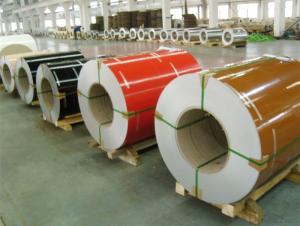Mill Finished Aluminum Diamond Plate Sheets 4x8 for Color Coating
- Loading Port:
- Shanghai
- Payment Terms:
- TT OR LC
- Min Order Qty:
- 5 m.t.
- Supply Capability:
- 3000 m.t./month
OKorder Service Pledge
OKorder Financial Service
You Might Also Like
Specification
1.Structure of Mill Finished Aluminium Coils for Color Coating
Mill Finished Aluminium Coils for Color Coating is one semi-finished aluminium material. This strip can be rolled down to aluminium coil,sheet,circle ect. The alloy AA1050 is widly used in building, industry ect. Its weight is much lower than steel. So many customers choosed aluminium material instead of steel.
2. Main features of Mill Finished Aluminium Coils for Color Coating
a.Competitive price---We have our own mills and can produce mill finished aluminium coils, so we can control the production cost better.
b.Professional after-sale service---We have more than 15 years exportation experience and you need not worry about the exporation problems.
c.Fast delivery time---We can control the delivery time within 35 days.
3. Image

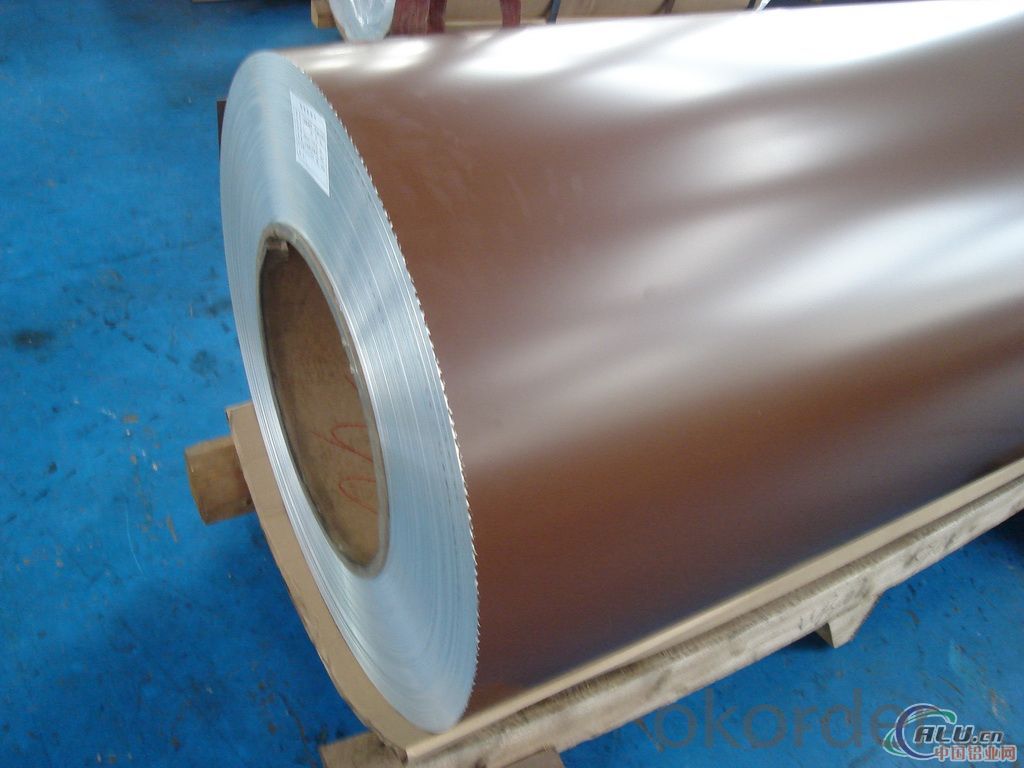
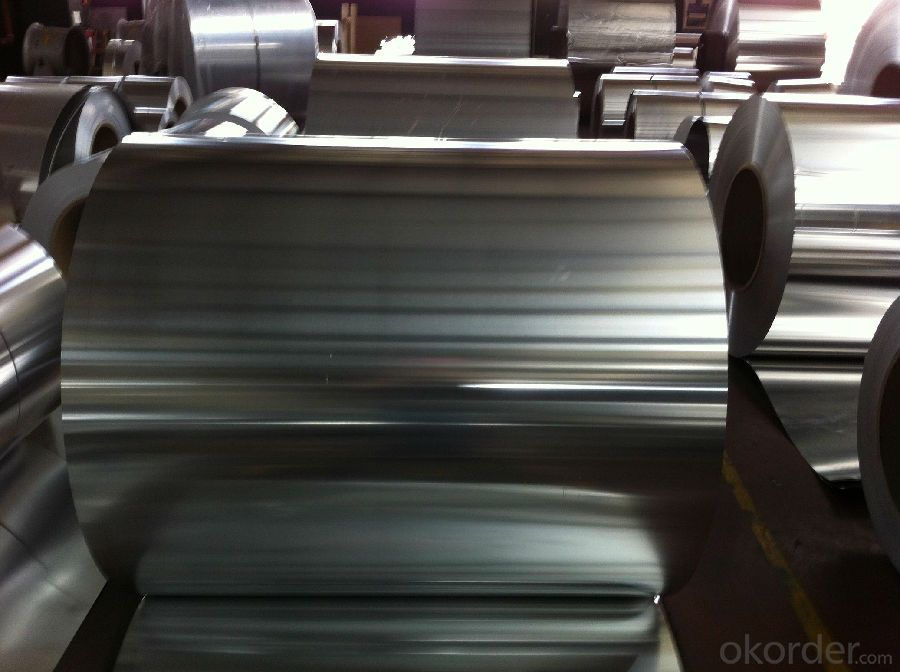
4. Product Specification
| ALLOY | TEMPER | COATING | COATING THICKNESS | MOQ |
| AA1050 | H14 | PE | 22-25 MICRONS | 5 TONS |
5.FAQ:
What is the quality standard?
---Usually our standard is GB3880-2006
What is the largest width?
---It is 2300mm
What is the MOQ?
---Usually we can accept 80 tons.
- Q: Can aluminum sheet withstand heavy loads?
- Indeed, the durability of aluminum sheet is such that it can endure substantial loads. Renowned for its exceptional strength-to-weight ratio, aluminum proves to be an exceptional selection for endeavors necessitating both resilience and load-bearing capacities. Notably prevalent in sectors like aerospace, automotive, construction, and marine, aluminum sheets are frequently employed in scenarios involving weighty burdens. Moreover, the innate corrosion resistance of aluminum further fortifies its capacity to bear heavy loads for extensive durations. Nevertheless, it is crucial to take into account the precise grade and thickness of the aluminum sheet, as diverse alloys and thicknesses yield differing load capacities.
- Q: What are the common sizes of aluminum sheets?
- Common sizes of aluminum sheets vary depending on the industry and application. However, there are several standard sizes that are commonly available. For general fabrication and construction purposes, the most common sizes of aluminum sheets range from 0.020 inches to 0.125 inches in thickness. These sheets typically come in standard sizes such as 4 feet by 8 feet, 4 feet by 10 feet, and 5 feet by 10 feet. In the automotive industry, aluminum sheets are often used for body panels and structural components. The sizes commonly used in this sector can range from 0.040 inches to 0.125 inches in thickness, with dimensions varying based on the specific application or vehicle model. For aerospace applications, aluminum sheets are typically thinner and come in smaller sizes. These sheets can range from 0.010 inches to 0.080 inches in thickness, with dimensions typically being smaller than those used in other industries. It is important to note that while the aforementioned sizes are common, custom sizes can also be manufactured to meet specific project requirements. Additionally, specialized industries may have unique size requirements that differ from the general standards. Therefore, it is always recommended to consult with suppliers or manufacturers to determine the most suitable size for a particular application.
- Q: This question asks about the expected duration or service life of aluminum siding or cladding used in construction.
- <p>The lifespan of aluminum siding or cladding typically ranges from 20 to 50 years, depending on the quality of the material, installation, and environmental conditions. High-quality aluminum siding, when properly maintained and installed, can last up to 50 years. It is resistant to rust and decay, making it a durable choice for exterior cladding. However, factors such as extreme weather conditions, poor installation, and lack of maintenance can reduce its lifespan.</p>
- Q: Is aluminum suitable for projects with heavy traffic or frequent use?
- <p>Yes, aluminum sheets can be used in projects that involve high levels of traffic or heavy use. Aluminum is a lightweight, durable, and corrosion-resistant material. It can withstand significant wear and tear, making it suitable for high-traffic areas. Additionally, aluminum is easy to maintain and can be recycled, which is beneficial for long-term projects. However, it's important to consider the specific grade of aluminum and its thickness to ensure it meets the required strength and durability for your project.</p>
- Q: Can aluminum sheets be used for roofing?
- Yes, aluminum sheets can be used for roofing. Aluminum is a popular choice for roofing materials due to its durability, lightweight nature, and resistance to corrosion. Aluminum roofing sheets are known for their longevity, as they can last for several decades without the need for replacement. Additionally, aluminum has excellent reflective properties, which can help to reduce energy costs by keeping the building cooler in hot climates. Moreover, aluminum is easy to install, making it an attractive option for roofing projects. Overall, aluminum sheets are a reliable and practical choice for roofing applications.
- Q: What is the surface hardness of aluminum sheets?
- The surface hardness of aluminum sheets can vary depending on the alloy and treatment process. Generally, aluminum sheets have a relatively low surface hardness compared to other metals such as steel or titanium. However, certain aluminum alloys can be heat-treated to improve their hardness. For example, 6061-T6 aluminum sheets have a surface hardness of around 95 Brinell, while 7075-T6 aluminum sheets have a surface hardness of approximately 150 Brinell. It is important to note that these values are approximate and can vary depending on the specific alloy, temper, and processing conditions.
- Q: What is aluminum curtain wall.
- Shell nosing edge sealing cap
- Q: What is the thickness range available for aluminum sheets?
- The thickness range available for aluminum sheets typically varies from 0.006 inches (0.15mm) to 0.25 inches (6.35mm), depending on the specific requirements and application.
- Q: How does the thickness of aluminum sheet affect its strength?
- The thickness of an aluminum sheet directly affects its strength. In general, a thicker sheet of aluminum will be stronger than a thinner one. This is because the thickness of the sheet determines the amount of material present, which in turn affects the sheet's ability to withstand external forces or loads. The strength of a material is typically measured by its ability to resist deformation or failure under stress. Thicker aluminum sheets have a greater volume of material, which means there are more atoms and bonds available to withstand forces. This results in a higher resistance to deformation or failure, making the sheet stronger. Additionally, a thicker aluminum sheet also has a higher load-bearing capacity. This means it can support heavier loads or withstand higher pressures without deforming or failing. The increased thickness provides more material to distribute the load, reducing the stress on individual atoms and bonds within the sheet. However, it is important to note that there is a limit to the thickness at which the strength of the aluminum sheet plateaus. Beyond a certain point, further increasing the thickness may not significantly improve its strength. This is because the material properties of aluminum, such as its crystal structure and grain boundaries, also play a role in determining its strength. In conclusion, the thickness of an aluminum sheet directly affects its strength. Thicker sheets have more material, enabling them to resist deformation or failure under stress more effectively. This increased thickness also allows them to support heavier loads or withstand higher pressures. However, there is a limit to the thickness at which the strength plateaus, as other material properties come into play.
- Q: Thickness of Aluminum Foil A rectangular sheet ofaluminum foil is 50 centimeters long and 20 centimeterswide, and weighs 5.4 grams. Find the thicknessof the aluminum foil in centimeters
- density Aluminum 2700 kg/m? Volume = 0.5 x 0.2 x d = 0.1d m? where d is thickness 5.4 g = 0.0054 kg 0.0054 kg / 2700 kg/m? = 2.0e-6 m? 2.0e-6 m? = 0.1d m? d = 2.0 e-5 m or 20 ?m or 0.02 mm or 0.002 cm .
Send your message to us
Mill Finished Aluminum Diamond Plate Sheets 4x8 for Color Coating
- Loading Port:
- Shanghai
- Payment Terms:
- TT OR LC
- Min Order Qty:
- 5 m.t.
- Supply Capability:
- 3000 m.t./month
OKorder Service Pledge
OKorder Financial Service
Similar products
Hot products
Hot Searches
Related keywords
